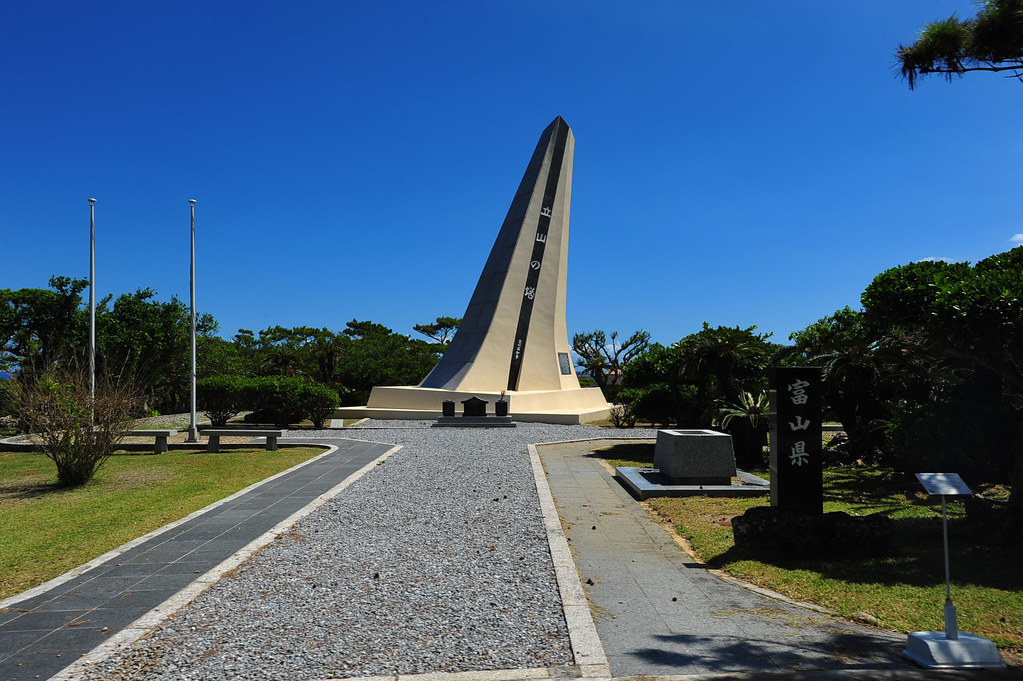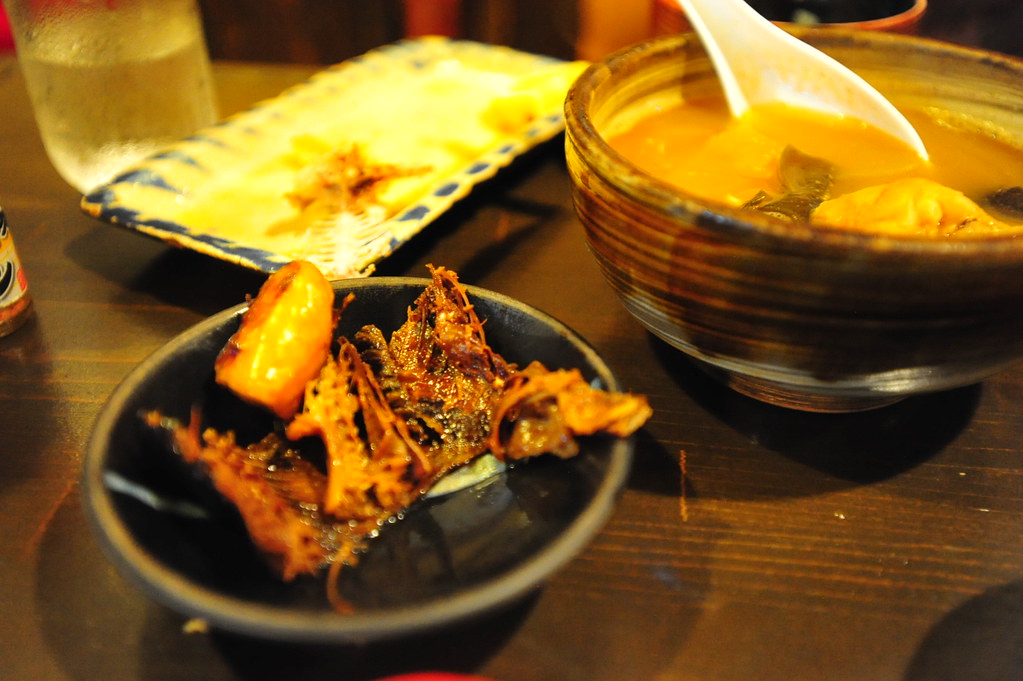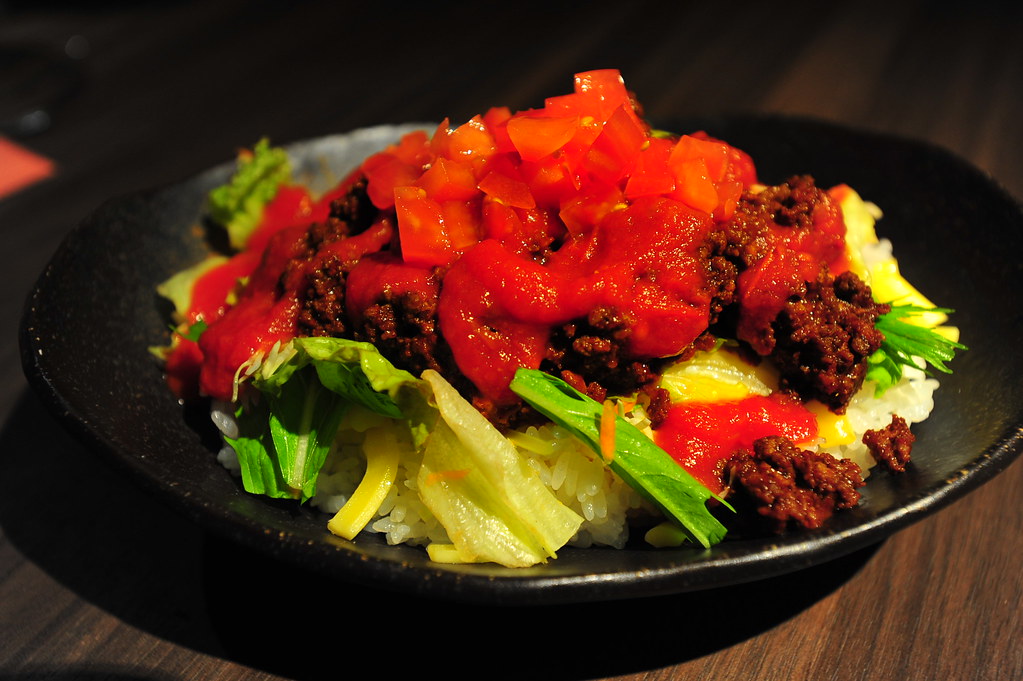After watching the late Anthony Bourdain’s Parts Unknown special on Okinawa 3 years ago while kicking it at a downtown Russian Sauna back home in NYC, I knew I had to add it on any itinerary I would design for an eventual Japan trip.
Anthony Bourdain’s Explore Parts Unknown: THE PERFECT DISH (Episode: Okinawa) from Kate Kunath on Vimeo.
Home of the Ryukyu Kingdom before it was annexed by Japan in 1879, Okinawa is to mainland Japan as is Hawai’i to mainland USA — both are separated geographically and culturally where Okinawa’s traditional customs and architecture may share more similarities with neighboring Taiwan and China than it would with Japan itself. For example, the origins of Karate hails from this very island, developed under the influence of Chinese Kung Fu.
Unlike Hawai’i, however, Okinawa has been a region far less penetrated by worldwide tourism. The calmness and easygoingness here has been a welcome start to what I expect will be balls-to-the-wall mania on the mainland.
But how did I get here in the first place? It was not until a layover in Tokyo 7 months ago that I felt Japan would compel me to make it part of an upcoming monsoon. And at the recommendations of monsooners like Koichi, as well as ex-pats like Shirley and Todd whom I met up with back in Tokyo, I should avoid the overwhelming March crowds and instead visit in September.
Finally, I just spent the prior 2 weeks in destinations like Turkmenistan, Azerbaijan and Nakhchivan. So if I’m going to monsoon an already frequently-visited destination such as Japan, I may as well begin as off-the-beaten-path as possible.
It may be very unlikely that if you’re reading this, you would be looking for an affordable way to get from Nakhchivan or Azerbaijan (where I just was yesterday) to Okinawa.
Alas I happened to be such a situation, but luckily Skyscanner offered a ridiculously affordable set of flights. For $500 I could fly from Baku — via the same Lufthansa Flight #613 that had flown me from Ashgabat a week prior — to Frankfurt, then from Frankfurt to Osaka, and finally from Osaka to Naha, Okinawa’s capital and largest city. This flight itinerary even allowed for a 5 hour layover in Frankfurt where I purchased a set of bluetooth speakers after losing my old one a few days ago in Baku.
Eventually after all that flying, I arrived into Naha a little bit delayed at around 2:30pm from Osaka:
While disembarking from my plane and being bused over to the airport, I took a few deep breaths readjusting to the humidity here after 2 weeks in the dry, arid desert climates of the Caucuses.
By the way, Okinawa Naha Airport stands out for being one of the first where my backpacks would be thoroughly screened at customs. Just like how it is when you arrive at Hawai’i, they care a lot about keeping their island ecosystem relatively untouched.
Leaving the custom agents empty-handed, I headed out of arrivals and upstairs to the Monorail, crossing an overhead bridge to the station, and paid 300¥ (they did not take my credit card, FYI) for a quick 20 minute ride to my lodgings at Sora House.
After checking into the hostel I reunited with Donna, my return monsooner from the Australia & New Zealand trip who had arrived the night before. She also helpfully rented a car from the airport for our 2 and a half days in Okinawa (it’s recommended to drive as public transportation can be inconvenient given how spread out everything is here). She’s been doing a swell job avoiding death by learning how to drive on the opposite side of the road here for the first time.
We then waited out a typhoonal downpour before walking over to Yunangi for dinner (food photos at the bottom of this post).
How we felt about dinner:
We then returned to our hostel and waited for the late night arrival of Trish. This will be her first monsoon!
The next morning the three of us got up at 7:30am and had the famous and fluffy Lawson Egg Sandwich (at the recommendation of Anthony Bourdain himself) for breakfast. You can find these sandwiches at any corner Lawson in Japan, if they’re not sold out by the time you get there.
The Unnatural, Inexplicable Deliciousness of the Lawson’s egg salad sandwich #Tokyo @PartsUnknownCNN pic.twitter.com/g5MxQ7BSRC
— Anthony Bourdain (@Bourdain) November 4, 2013
We then began our first full day in Okinawa at Shurijo Castle.
Once the palace of the Ryukyu Kingdom, Shurijo was built in a style more influenced by Chinese architecture and with decorative elements similar to that seen primarily in the Forbidden City. After Okinawa’s annexation by Japan, it became largely neglected before becoming completely demolished during the Battle of Okinawa in 1945.
After the war, the site was renovated as a university campus before undergoing a complete reconstruction in 1992. While now very pretty, this also means nothing you see here is original.
Entry fee costs 820¥ and it opens at 8am.
While touring inside the castle, we took a quick break with a 310¥ Tea Set while sitting in the same rooms where the Ryukyu royal families used to host guests. Here you can enjoy Okinawan jasmine tea with unlimited refills and various cookies.
The best part were the gardens around the castle and the views of Okinawa outside the entrance:
After about an hour here we considered driving south to Okinawa World (entry fee 1200¥), an otherwise generic theme park best known for the 890 meter long Gyokusendo Cave.
We instead opted to head to Aeon Naha Mall where I replaced a thermos that I had lost back in Azerbaijan and Trish got a cane to help her walk better after her new motorcycle fell on her foot a week ago back in Vancouver (not a great thing to happen before a big trip!).
After also having a quick lunch at the mall, we drove further south to Okinawa Peace Park, built in commemoration of the 200,000 soldiers and civilians who died during the Battle of Okinawa (aka “The Typhoon of Steel”), the largest and one of the bloodiest amphibious assault in the Pacific theater of World War 2.
Beginning April 1st, 1945, the 500,000 strong U.S. military bombarded Okinawa for 90 days while 110,000 Japanese soldiers held off as long as they could in a “war of attrition” to delay a U.S. invasion of mainland Japan
We walked around the park towards the sea for commanding views of the Pacific Ocean and the “suicide cliffs” where hundreds of Okinawans and Japanese threw themselves to their deaths either to avoid capture or while fleeing the incoming onslaught.
For a 100¥, you can take a small golf cart for a ride up the hill to the cemetery grounds.
Back at the main park and for 300¥, we visited the comprehensive Okinawa Prefectural Peace Memorial Museum that chronicles the events leading up to the Battle of Okinawa and post-war colonial life under U.S. rule.
What I initially found remarkable was a lack of revisionist history; the exhibits were frank about documenting the atrocities committed by the Japanese army, before realizing I was still in Okinawa and not yet on the mainland.
It’s known that many Okinawans still struggle with forgiving the Japanese for annexing Okinawa against their will, being forced into a world war they never wanted, and living for decades afterwards under the shadow of post-war Western imperialism.
After the exhibits, we took the elevator up to the museum’s observation tower:
After an hour at the museum, we walked back to the parking lot area and headed up a flight of stars to visit the Okinawa Peace Hall (entry fee 450¥).
Here a large Buddha sits within a prayer hall surrounded by an art gallery dedicated to world peace.
You can head downstairs behind the Buddha for a tiny basement gallery of peace rocks donated by countries around the world.
And if you exit the peace hall from the side, there’s a small butterfly garden around the corner.
We then returned to our car and drove over 8 minutes to the emotive Himeyuri Museum (entry fee 300¥).
Dedicated to the 222 students and 18 teachers of the Okinawa Daiichi Women’s High School and Okinawa Shihan Women’s School who lost their lives during the Battle of Okinawa, the museum chronicles their quick mobilization into a nursing unit for injured Japanese soldiers before being disbanded and summarily killed soon afterwards, either by their own hand or as collateral casualties by invading U.S. forces.
After a very sobering afternoon, we drove back to Sora House for a much needed drink over a pork and seafood dinner at Aguncha.
Be forewarned, Aguncha may charge an 8% tax on top of the bill (the listed prices do not include tax like some other restaurants), and they serve a mandatory appetizer at 400¥ per person without informing you beforehand. They were gracious enough to waive the appetizers for us but you may not be so lucky.
The next morning, we had a late morning and drove up north to the world famous Churaumi Aquarium (entry fee 1850¥).
You could be fooled into thinking you were in Hawai’i walking around here.
The aquarium itself, while massive, is easily laid out in a singular, easy-to-follow one track route down long corridors through multiple rooms, eventually leading to the massive Kuroshio Sea Tank, one of the largest in the world.
Near the end is the shark lab with tank filled with a variety of sharks looking really really bored.
The place is otherwise a lot smaller than I expected. Despite the humongous crowds, you can see the entire museum within an hour or two.
From here Trish recommended that we drive further north to check out Kouri Bridge, the world’s longest toll-free bridge at 2 kilometers long that takes you to Kouri Beach and Island.
After driving around the entire circumference of Kouri Island for 10 minutes, we headed back to Naha for a final dinner in Okinawa before our afternoon flight tomorrow to Nagasaki and mainland Japan.
That being said…
What To Eat In Okinawa
Okinawa Soba
Deep-fried Okinawa fish
Rafutei (Simmered pork belly)
Umi budō (Sea grapes)
Beni-imo chippusu (Purple sweet potato chips) with purple yam ice cream
Gōyā (or anything) chanpurū (Bitter gourd stir-fry with either pork, beef, or yes, even spam…just like Hawai’i!)

Erabujiru (Sea snake soup), Sōki (Pork spare ribs stewed with bone), & Tebichi soba (Stewed pig’s foot with soba noodles):
Mimigā (Pig ear in vinegar):
Jiimāmii dōfu (Peanut tofu):
Black Squid Ink Risotto:
Taco Rice, made by local Okinawans for the American military servicemen who became nostalgic for food back home.
Tōfuyō (Fermented tofu)
Nakami-jiru (Pork-tripe)
Jack’s Steakhouse for the Japanese take on American steak.
Other dishes to try (we either couldn’t get a decent photo or we’ll have to come back): Sunui tempura (Pickled kombu tempura), Sātā andagii (Okinawan doughnuts), Hiijā sashimi (raw goat), Hira yāchii (Okinawa-style okonomiyaki, a savory pancake), and Jūshii (Rice porridge).
Onwards to mainland Japan!
![]()
- At time of posting in Naha, Okinawa, it was 30 °C - Humidity: 84% | Wind Speed: 3km/hr | Cloud Cover: rainy

























































